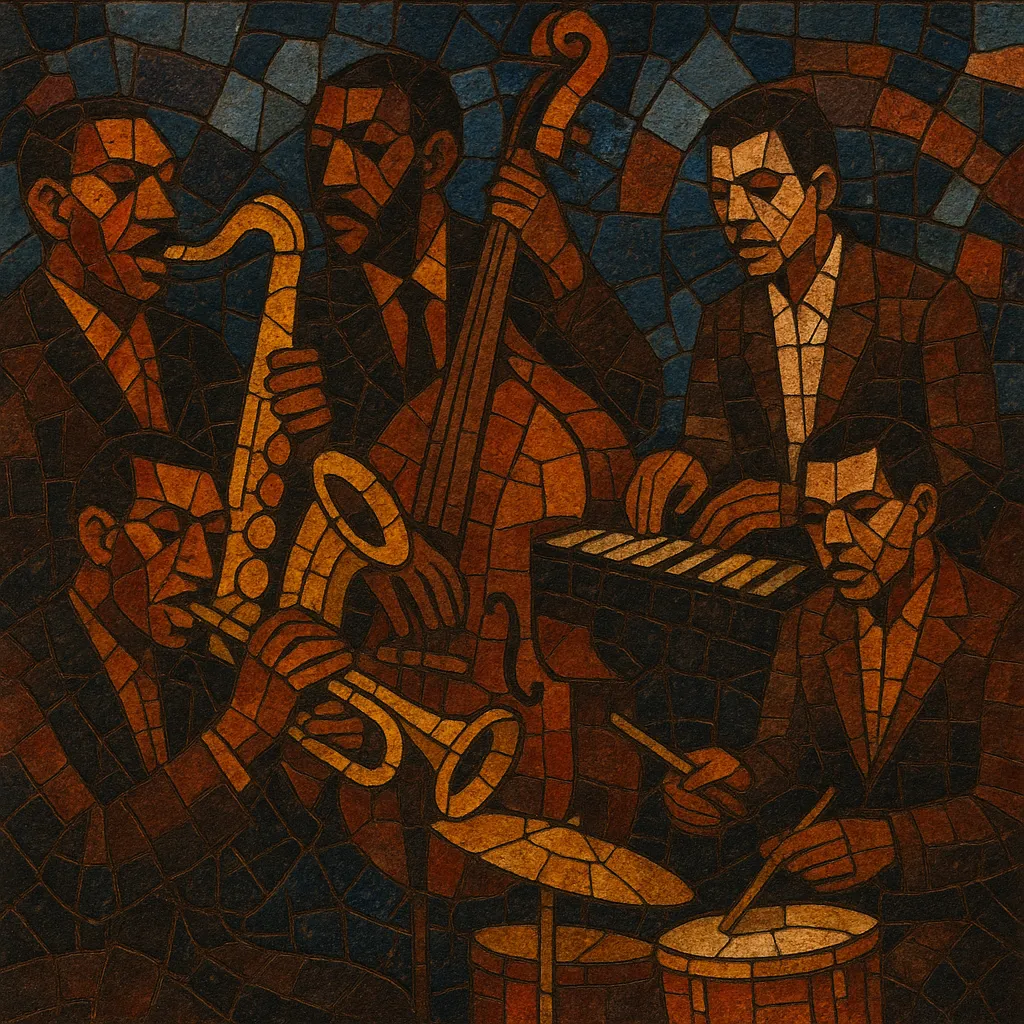Hard bop is a mid-1950s evolution of bebop that grounds modern jazz in the earthy sounds of blues, gospel, and rhythm and blues. It keeps bebop’s small-group virtuosity and improvisational focus, but favors punchy, riff-based themes, singable melodies, and a stronger, groove-forward swing.
Typically performed by quintets or sextets (trumpet, tenor sax, piano, bass, and drums), hard bop emphasizes driving ride-cymbal swing, walking bass, and piano comping with bluesy voicings and percussive “block-chord” figures. Its compositions often use 12-bar blues, rhythm changes, and 32-bar AABA song forms, and may feature call-and-response horn writing and shout-chorus style interludes. The style is closely associated with the East Coast and the Blue Note/Prestige sound: tight arrangements, soulful heads, and extended, expressive solos.
Hard bop emerged in New York and other East Coast hubs as a response to (and evolution of) bebop. While bebop had set new standards for harmonic sophistication and speed, musicians like Art Blakey, Horace Silver, Clifford Brown, Max Roach, and Miles Davis sought a sound that brought jazz closer to African American church music, blues feeling, and the immediacy of rhythm and blues. Early landmarks include Miles Davis’s mid-1950s recordings (e.g., “Walkin’”) and the Clifford Brown–Max Roach Quintet’s sides for EmArcy, which codified the quintet format and hard-driving swing aesthetic.
The style blossomed on labels like Blue Note, Prestige, and Riverside, with producer Alfred Lion, executive Francis Wolff, and engineer Rudy Van Gelder shaping a crisp, present sound. Art Blakey & the Jazz Messengers became a defining institution, launching generations of players. Seminal albums such as Art Blakey’s “Moanin’,” Horace Silver’s “Song for My Father,” Hank Mobley’s “Soul Station,” and Lee Morgan’s “The Sidewinder” combined catchy, blues-gospel heads with sophisticated but accessible improvisation. The music’s assertive voice resonated amid rising civil rights consciousness, foregrounding Black musical identity and communal expression.
By the mid-1960s, some hard bop musicians pushed toward modal harmony and freer forms, helping seed post-bop and, eventually, jazz fusion. Others leaned further into groove and church-inflected harmonies, catalyzing soul jazz. The core hard bop language—riffy themes, robust swing, and soulful intensity—remained a bedrock of modern jazz pedagogy and performance. A later “Young Lions” revival in the 1980s (and ongoing Blue Note-inspired projects) reaffirmed the style’s enduring appeal and its central place in the jazz canon.


